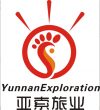
Tian Yongguang – Representative Inheritor of Dongjing Daoist Music Project in Huize County, Yuxi
Background and Heritage
Tian Yongguang (田永光), male, of Han (汉族) ethnicity, was born in 1941 in Huize County (会泽县), Qujing City (曲靖市). He is a provincial-level representative inheritor of the intangible cultural heritage project of Dongjing Music (洞经音乐) in Huize (会泽).
Learning and Inheritance
Tian Yongguang (田永光) has a solid background in literary and artistic work and is passionate about folk arts. After retiring in 2000, he founded the Tanglang Dongjing Ancient Music Ensemble (堂琅洞经古乐团) in Huize County (会泽县) and served as its leader. Through his dedicated efforts, the ensemble gradually developed into a well-organized senior cultural group with a stable team, regular practice venue, funding, complete facilities, and consistent performance activities.
Artistic Characteristics
Huize Dongjing Music (会泽洞经音乐), also known as Tanglang Ancient Music (堂琅古乐), was originally introduced from the Central Plains as Taoist music. With the development of Huize’s copper merchant culture and temple society, it evolved into a form of ancient music that integrates Confucian, Buddhist, and Taoist musical elements with a distinctive local flavor. This music is known for its elegance, tranquility, and clarity. It retains the solemn, ancient, and serene artistic conception of Dongjing music, absorbs the refinement of court music, and blends in the melodious silk and bamboo music of Hanqu from Jiangnan, as well as elements of Dian Opera (滇剧) and local folk music.
Inheritance and Preservation
Fully aware of the cultural value and heritage significance of Dongjing Music (洞经音乐), Tian Yongguang (田永光) has actively participated in its preservation. He led his team to collect and organize 19 pieces of Dongjing Music, personally taking part in over 500 performances for social events, meetings, and receptions, reaching over 5,000 audience members both domestic and international. His work has helped preserve and promote this traditional art form, which carries moral and cultural significance.
Tian Yongguang (田永光) holds considerable influence and appeal in the local community. He treats the transmission of Dongjing Music (洞经音乐) as a lifelong mission, continuously striving to create favorable conditions for the continuation and development of this collective performance art.
In 2006, Huize Dongjing Music (会泽洞经音乐) was included in the first batch of provincial-level intangible cultural heritage lists by the People’s Government of Yunnan Province (云南省人民政府).
Unique Playing Techniques of Huize Dongjing Music
1. Melodic Singing and Recitation
-
Talk Singing (Tánqiāng): This is a highly expressive vocal technique used to sing the rhymed verses in the scriptures. It is characterized by its lyrical and emotional nature. The melodies are often complex and rich, with a wide range of pitches and dynamics.
-
Recitation Singing (Sòngqiāng): This technique is more narrative in nature, used for reciting the scriptures in a rhythmic and melodic way. It often involves a combination of singing and speaking, with a focus on clarity and expression.
2. Instrumental Techniques
-
Blow and Strike Instruments: The use of blow and strike instruments, such as the bamboo flute and the wooden fish (mùyú), adds a rhythmic foundation to the music. The bamboo flute is played with a unique embouchure technique that produces a clear and resonant sound.
-
String and Percussion Instruments: Instruments like the pipa (a four-stringed lute) and the guzheng (a large Chinese zither) are used to create intricate melodies and harmonies. The pipa is played with a combination of plucking and finger techniques, while the guzheng is known for its sliding and vibrato techniques.
3. Ensemble Coordination
-
Unified Performance: The ensemble performance of Huize Dongjing music is characterized by its high level of coordination and synchronization. The musicians, often dressed in traditional attire, perform in a unified and respectful manner, reflecting the solemn nature of the music.
-
Lead Singer and Harmony: The performance typically begins with a lead singer (lǐngquāng shēng) who sets the tone and melody. The rest of the ensemble follows, creating a harmonious and layered sound.
4. Cultural and Religious Context
-
Scripture Singing: The music is deeply rooted in religious and cultural practices, often performed during rituals and ceremonies. The singing of scriptures is an integral part of the performance, with each piece having a specific religious or cultural significance.
-
Incorporation of Local Elements: The music incorporates elements from local folk music, such as the use of local instruments and musical motifs. This blend of traditional and local elements gives Huize Dongjing music its unique regional flavor.
For Chinese version please go to:
http://www.ynich.cn/view-ml-13111-3046.html

 7 Days GolfingTour
7 Days GolfingTour
 8 Days Group Tour
8 Days Group Tour
 8 Days Yunnan Tour
8 Days Yunnan Tour
 7 Days Shangri La Hiking
7 Days Shangri La Hiking
 11 Days Yunnan Tour
11 Days Yunnan Tour
 6 Days Yuanyang Terraces
6 Days Yuanyang Terraces
 11 Days Yunnan Tour
11 Days Yunnan Tour
 8 Days South Yunnan
8 Days South Yunnan
 7 Days Tea Tour
7 Days Tea Tour
 8 Days Muslim Tour
8 Days Muslim Tour
 12 Days Self-Driving
12 Days Self-Driving
 4 Days Haba Climbing
4 Days Haba Climbing
 Tiger Leaping Gorge
Tiger Leaping Gorge
 Stone Forest
Stone Forest
 Yunnan-Tibet
Yunnan-Tibet
 Hani Rice Terraces
Hani Rice Terraces
 Kunming
Kunming
 Lijiang
Lijiang
 Shangri-la
Shangri-la
 Dali
Dali
 XishuangBanna
XishuangBanna
 Honghe
Honghe
 Kunming
Kunming
 Lijiang
Lijiang
 Shangri-la
Shangri-la
 Yuanyang Rice Terraces
Yuanyang Rice Terraces
 Nujiang
Nujiang
 XishuangBanna
XishuangBanna
 Spring City Golf
Spring City Golf
 Snow Mountain Golf
Snow Mountain Golf
 Stone Mountain Golf
Stone Mountain Golf




